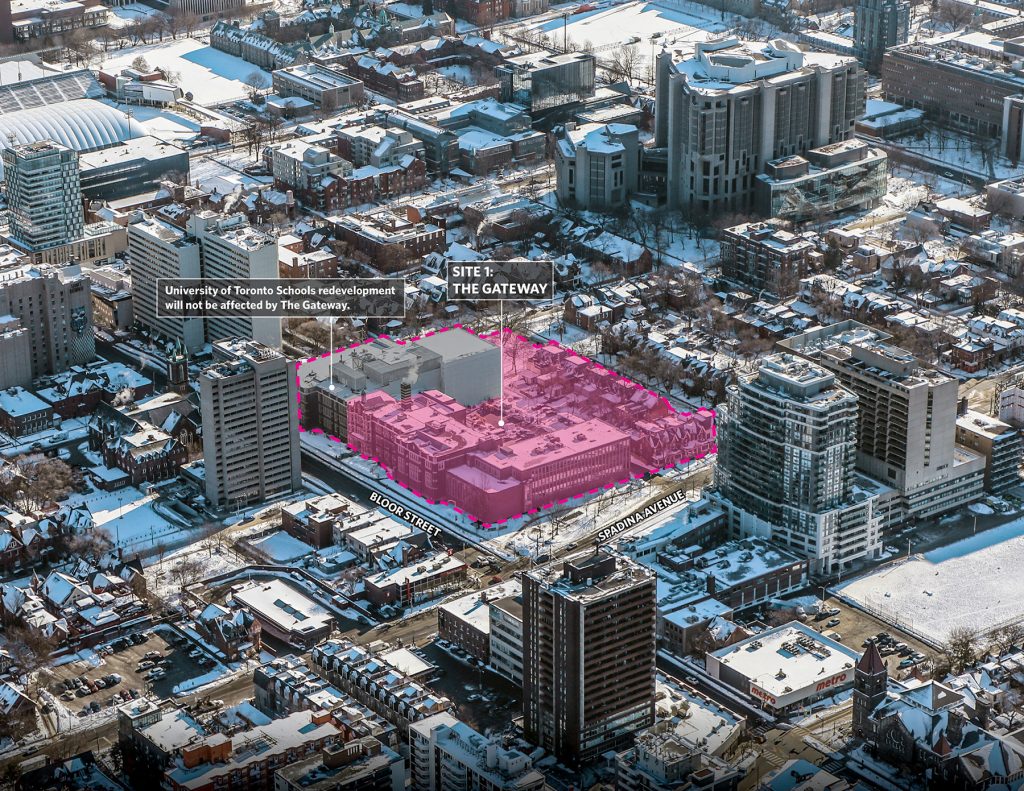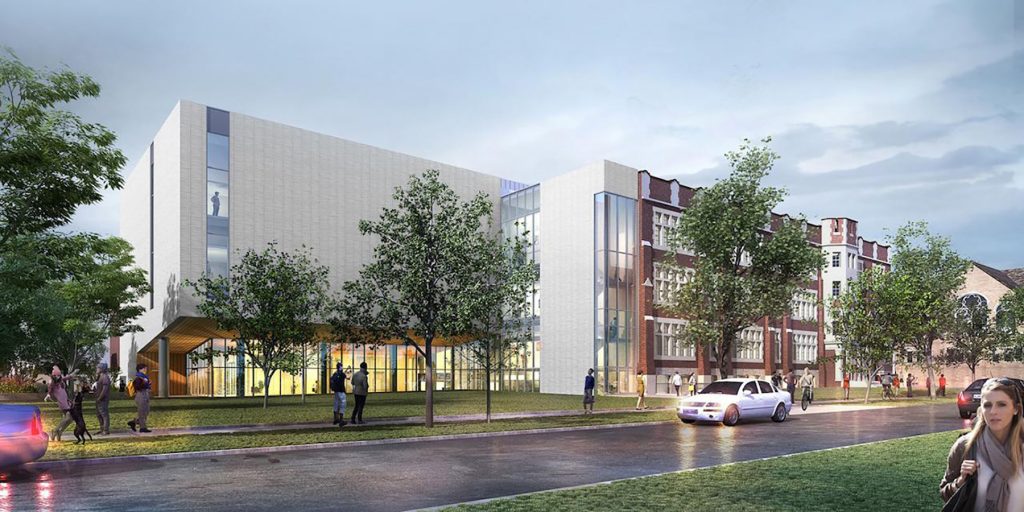University chooses developer of Mirvish Village to lead project

By Fox Oliver
The University of Toronto has decided to partner with Westbank to design, develop, and build the largest university housing development in Canada. The University of Toronto’s Site 1: The Gateway project will be located at the southeast corner of Bloor Street W. and Spadina Avenue and will feature a mix of residential, academic, retail, and outdoor space.

“The Gateway will significantly address the university’s strong demand for housing, advancing the academic mission by adding hundreds of new units to the campus and to downtown Toronto,” stated Scott Mabury, vice-president of operations at U of T. As of 2022, nearly 10,000 students lived in U of T residences across all campuses, but the demand for student housing is still high. The Gateway will likely consist of two towers flanking the University of Toronto Schools’ (UTS) western side, which could provide 700-800 residential units, academic space and a private sector business component. Though building plans have not been completed or publicized, the northern tower (facing Bloor) could extend to 29 storeys tall, and the southern tower (facing Spadina) to 22 storeys, if the university applies to construct the towers to their maximum heights permissible under the view shed restrictions of 1 Spadina Crescent.
“Envisioned as an inviting entrance into the northwest quadrant of the St. George Campus, The Gateway proposes to link the university with the surrounding neighbourhood,” states U of T’s project description. This will be achieved by incorporating retail units, indoor and outdoor amenities, and complementary academic space into the site. UTS and its recent redevelopment will not be affected by The Gateway project.
According to U of T’s press release, “the university’s evaluation committee selected Westbank from a shortlist through a competitive procurement process, led by CBRE.” The Vancouver-based development company, founded in 1992, is currently involved in a mixed-use development at 19 Duncan St., the mixed-use King Condos, and the redevelopment of Mirvish Village (formerly the site of Honest Ed’s) at Bathurst Street and Bloor Street West.
Improved energy infrastructure and sustainable design are key objectives for The Gateway project. These align with the university’s commitment to achieving a climate positive campus by 2050.
“With The Gateway, we saw an opportunity to create an inspiring faculty and student family housing project that will incorporate a high degree of innovation in its response to climate change and a level of city building that the University of Toronto consistently strives to achieve,” said Ian Gillespie, founder and CEO of Westbank, in a press release.
“It was demonstrated to us (during the Mirvish Village Project) that Westbank welcomed consultation, was open to ideas, and was good with sharing plans. The application went through with no appeals; everything was done in the consultation phase,” commends Sue Dexter, a founding board member of the Harbord Village Residents’ Association (HVRA). Westbank owned the property of the Mirvish Village project, allowing them the power to respond to community input as they saw fit. However, the upcoming levels of community engagement with The Gateway project depend on U of T’s willingness to engage and listen, as they own the property.
Julie Mathien, board member of the Huron-Sussex Residents’ Association (HSRO), said “the HSRO supports increased residential units being added to the area,” as the area is in need of student and faculty housing. “We want to help plan with the university so that the development contributes to the surrounding neighbourhood,” added Mathien. However, these conversations will have to wait until U of T selects an architect for the project and further community consultation occurs.
Mathien raises concerns surrounding “the construction of an 11-storey building that is planned to border the back of about 18 housing units on Washington Ave., rendering them unusable in an already tight market.” This is an issue, as multiple area residents’ associations have stated that having the planned 11-storey building expand to the very edge of the laneway behind the houses is not necessary and could be prevented. Since the HSRO’s involvement with U of T’s secondary planning in 1997, it was clear that one of the HSRO’s and U of T’s goals was to “retain the character of residential uses and house form buildings along tree-lined streets (in the Huron-Sussex area),” as described in Section 4.2 of the 1997 secondary plan. However, the current plans for Site 1 would not achieve this goal, as they render housing units unusable.
READ MORE:
- NEWS: Huron-Washingon Parkette relocates while UTS expands (Spring 2019)
- NEWS: Tentative deal for UTS (December 2015)
